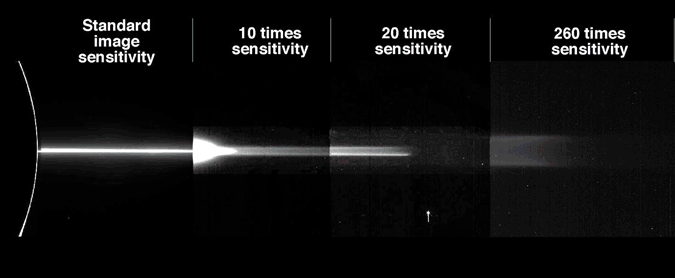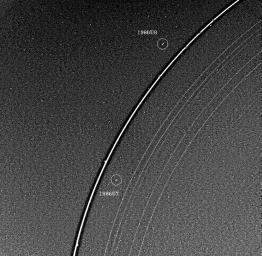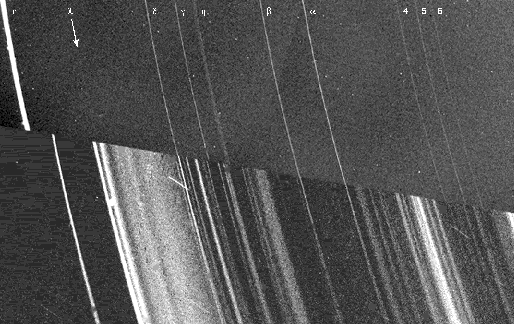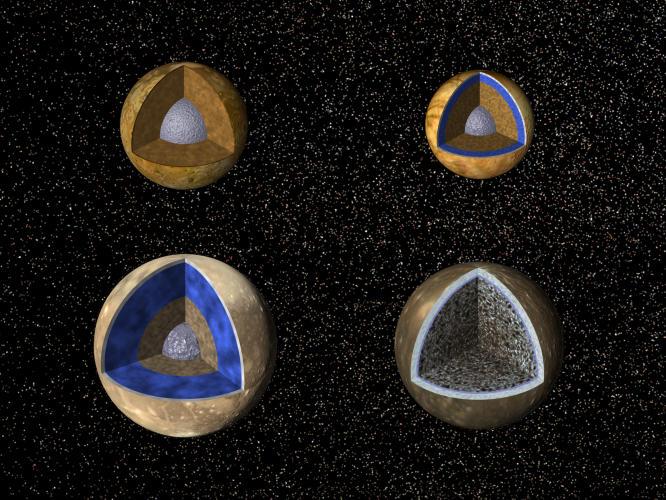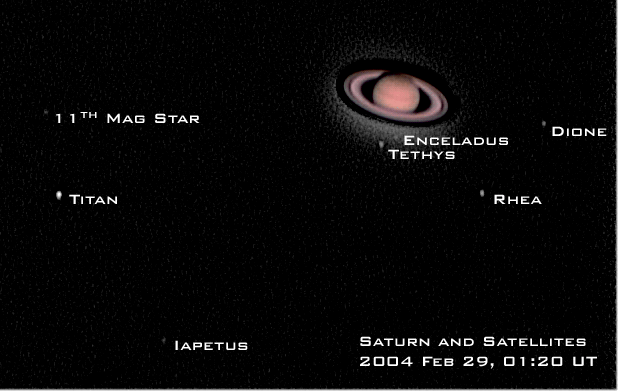Pluto was
discovered in 1930 by Clyde Tombaugh, after a decades long search in vain
by Percival Lowell. It has been known as the 9th planet of the solar system
since that time, but perhaps we were a bit too hasty. Since then a large number
of other objects that are very similar to Pluto have been found, and it is
now recognized that these are part of the Kuiper Belt group of objects. In
fact, there is a group of objects called Plutinos
that have the same orbital characteristics as Pluto: they cross Neptune's
orbit, and have a 3:2 resonance with Neptune.
All four of the giant
planets have rings, although none are easily visible except the rings of Saturn.
The rings probably have several different origins. Jupiter's faint rings are
due to dust from meteroid strikes on small moons nearby. Saturn's rings are
due to the breakup of a fairly large body (about 250 km in diameter) due to
tidal forces. The faint rings of Uranus and Neptune may also be due to tidal
disruption, but if so the bodies are much smaller. The rings of Uranus and
Neptune are kept narrow by the action of shepherd
moons, which "herd" the ring particles and keep them
in a narrow range of orbits.
Note that the rings are
not long-lived phenomena. Saturn's rings may not last more than a few hundred
million years before the material eventually falls onto the planet.
